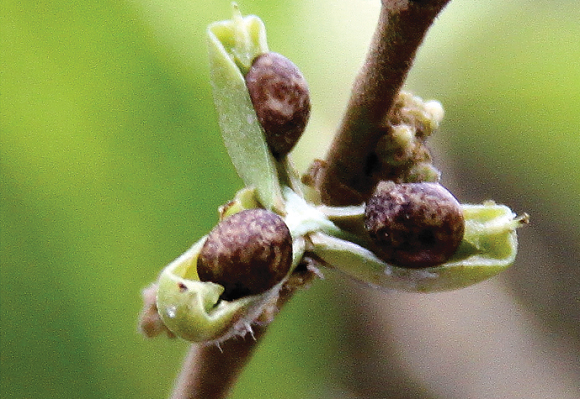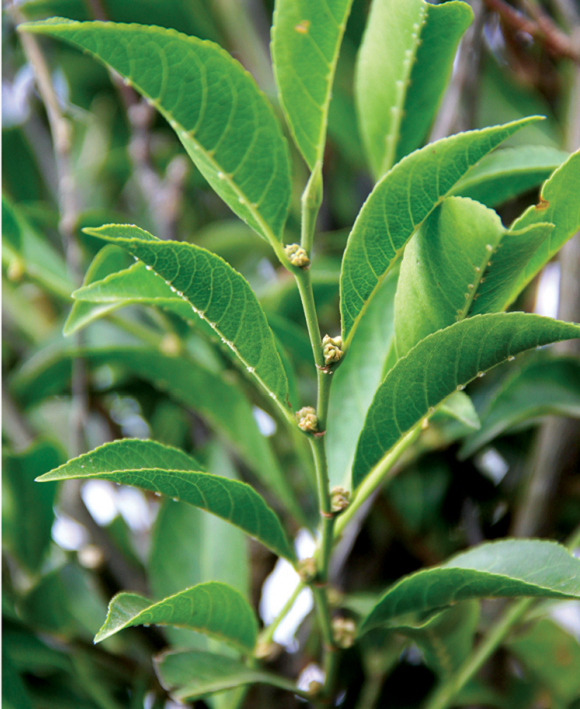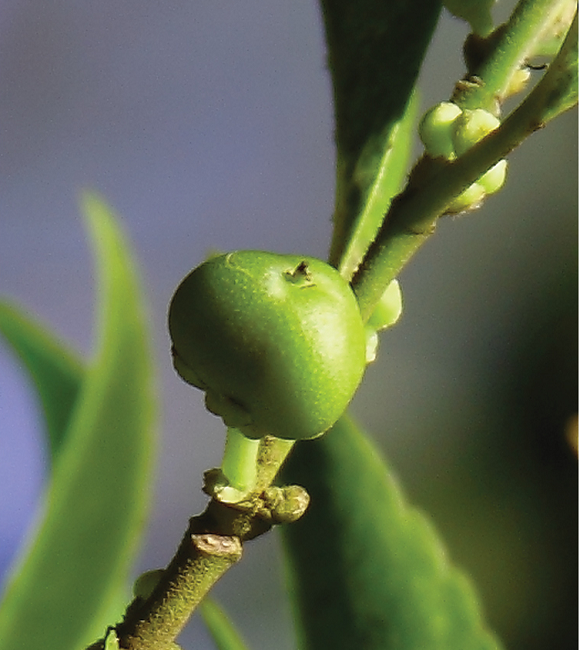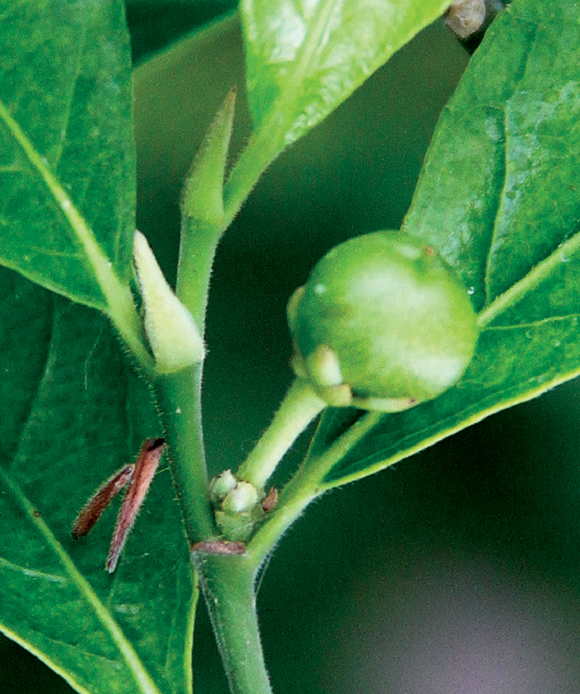
How many times have you heard the phrase “in a post-apocalyptic world…“? Movies, books, comics and games draw upon that all-too-common setting to dream up stories where man is pushed to the brink in order to survive in a unforgiving environment.
What makes a world post-apocalyptic though? There are plenty of ways to get there – nuclear apocalypse, asteroid strikes, zombies, giant robots, but one thing is pretty common: Food is scarce and people have to scavenge for it because the land is just too polluted to grow anything edible. But what if you could plant something in the ground that would allow other things to grow? What if nature already had its own answer to this problem? What if you could make that “every man for himself” world back into a “let’s work off the land together!” love-fest? Sounds to us like a billion dollar industry! Do they still have dollars in a post-apocalyptic world?!?!
In May 2014, researchers in the Philippines came across a very interesting plant that basically eats nickel. Only 0.5-1% of the plants in the nickel-rich soils of the Zambales Province on the Luzon Island exhibit this trait, making it an extremely rare phenomenon! Researchers found that this plant had up to 18,000 parts per million of nickel in its leaves. It’s been named Rinorea niccolifera, the niccolifera stemming from the fact that it absorbs a lot of nickel.
▼Later, you can get your nickel back.
There are only about 450 species of plants in the world that exhibit this sort of trait. That’s a tiny fraction of the over 300,000 species of plants. Rinorea niccolifera belongs to a group of plants called hyperaccumulator plants. They are of particular interest because they can be used for phytomining or phytoremediation.
Phytomining is the process of growing and harvesting plants that absorb valuable metals from the soil. These metals can be extracted from the plants post-harvest. Phytoremediation, on the other hand, is what could bring us back from an Akira-like world. Phytoremediation refers to plants being used to remove toxic minerals from the soil. Scientists already hope to use hyperaccumulator plants in just this way to renew contaminated soils so that edible crops can be grown there again.
These hyperaccumulator plants can be used to kick-start green technologies, but it will take researchers like those in the Philippines to help make it happen. Those of us at RocketNews24 sure hope that these plants will halt an apocalypse before one happens. We aren’t ready to trade our laptop batteries for two packages of Top Ramen!
▼This world saving plant is ready for it’s close-up, Mr. DeMille!
Source: globalpost, Phytokeys
Images: Edwino S. Fernando




 Nagoya University develops rice plant that grows pure sugar
Nagoya University develops rice plant that grows pure sugar Three centipede and cockroach species are newly named and placed under protection in Okinawa
Three centipede and cockroach species are newly named and placed under protection in Okinawa Japanese potato chip maker to sell potato-growing kits
Japanese potato chip maker to sell potato-growing kits Japan falls in love with plant that grows cute rabbits pulling peace-sign poses
Japan falls in love with plant that grows cute rabbits pulling peace-sign poses Potted plant that grows tiny leaping dolphins is the latest botanical muse to enchant Japan
Potted plant that grows tiny leaping dolphins is the latest botanical muse to enchant Japan Beautiful new Final Fantasy T-shirt collection on the way from Uniqlo【Photos】
Beautiful new Final Fantasy T-shirt collection on the way from Uniqlo【Photos】 Foreign English teachers in Japan pick their favorite Japanese-language phrases【Survey】
Foreign English teachers in Japan pick their favorite Japanese-language phrases【Survey】 Disney princesses get official manga makeovers for Manga Princess Cafe opening in Tokyo
Disney princesses get official manga makeovers for Manga Princess Cafe opening in Tokyo Randomly running into a great sushi lunch like this is one of the best things about eating in Tokyo
Randomly running into a great sushi lunch like this is one of the best things about eating in Tokyo Is the new Shinkansen Train Desk ticket worth it?
Is the new Shinkansen Train Desk ticket worth it? Osaka’s creepy cute mascot speaks for first time, adds more fuel the creepy OR cute debate【Video】
Osaka’s creepy cute mascot speaks for first time, adds more fuel the creepy OR cute debate【Video】 Kyushu-exclusive Black Mont Blanc goes nationwide in a “Special” way
Kyushu-exclusive Black Mont Blanc goes nationwide in a “Special” way What’s wrong with English education in Japan? Pull up a chair…
What’s wrong with English education in Japan? Pull up a chair… We go looking for the free kaoyu hot spring facebath of onsen town Kusatsu【Photos】
We go looking for the free kaoyu hot spring facebath of onsen town Kusatsu【Photos】 Hey, Japanese taxi driver! Take us to your favorite restaurant in Tsuruga City!
Hey, Japanese taxi driver! Take us to your favorite restaurant in Tsuruga City! We try out “Chan Ramen”, an underground type of ramen popular in the ramen community
We try out “Chan Ramen”, an underground type of ramen popular in the ramen community New Studio Ghibli bedding sets are cool in all senses of the word
New Studio Ghibli bedding sets are cool in all senses of the word Our Japanese reporter visits Costco in the U.S., finds super American and very Japanese things
Our Japanese reporter visits Costco in the U.S., finds super American and very Japanese things New Pokémon cakes let you eat your way through Pikachu and all the Eevee evolutions
New Pokémon cakes let you eat your way through Pikachu and all the Eevee evolutions There’s a park inside Japan where you can also see Japan inside the park
There’s a park inside Japan where you can also see Japan inside the park Japanese convenience store packs a whole bento into an onigiri rice ball
Japanese convenience store packs a whole bento into an onigiri rice ball Hanton rice — a delicious regional food even most Japanese people don’t know about, but more should
Hanton rice — a delicious regional food even most Japanese people don’t know about, but more should Final Fantasy, Kingdom Hearts, and Dragon Quest pet product line announced by Square Enix
Final Fantasy, Kingdom Hearts, and Dragon Quest pet product line announced by Square Enix Studio Ghibli releases Kiki’s Delivery Service chocolate cake pouches in Japan
Studio Ghibli releases Kiki’s Delivery Service chocolate cake pouches in Japan Japan’s bone-breaking and record-breaking roller coaster is permanently shutting down
Japan’s bone-breaking and record-breaking roller coaster is permanently shutting down New definition of “Japanese whiskey” goes into effect to prevent fakes from fooling overseas buyers
New definition of “Japanese whiskey” goes into effect to prevent fakes from fooling overseas buyers Foreign passenger shoves conductor on one of the last full runs for Japan’s Thunderbird train
Foreign passenger shoves conductor on one of the last full runs for Japan’s Thunderbird train Kyoto bans tourists from geisha alleys in Gion, with fines for those who don’t follow rules
Kyoto bans tourists from geisha alleys in Gion, with fines for those who don’t follow rules Studio Ghibli unveils Mother’s Day gift set that captures the love in My Neighbour Totoro
Studio Ghibli unveils Mother’s Day gift set that captures the love in My Neighbour Totoro Domino’s Japan now sells…pizza ears?
Domino’s Japan now sells…pizza ears? Toyota built a life-sized Miraidon Pokémon and are letting people test drive it this weekend
Toyota built a life-sized Miraidon Pokémon and are letting people test drive it this weekend New Japanese KitKat flavour stars Sanrio characters, including Hello Kitty
New Japanese KitKat flavour stars Sanrio characters, including Hello Kitty Sales of Japan’s most convenient train ticket/shopping payment cards suspended indefinitely
Sales of Japan’s most convenient train ticket/shopping payment cards suspended indefinitely Sold-out Studio Ghibli desktop humidifiers are back so Totoro can help you through the dry season
Sold-out Studio Ghibli desktop humidifiers are back so Totoro can help you through the dry season Japanese government to make first change to romanization spelling rules since the 1950s
Japanese government to make first change to romanization spelling rules since the 1950s Ghibli founders Toshio Suzuki and Hayao Miyazaki contribute to Japanese whisky Totoro label design
Ghibli founders Toshio Suzuki and Hayao Miyazaki contribute to Japanese whisky Totoro label design Doraemon found buried at sea as scene from 1993 anime becomes real life【Photos】
Doraemon found buried at sea as scene from 1993 anime becomes real life【Photos】 Tokyo’s most famous Starbucks is closed
Tokyo’s most famous Starbucks is closed One Piece characters’ nationalities revealed, but fans have mixed opinions
One Piece characters’ nationalities revealed, but fans have mixed opinions We asked a Uniqlo employee what four things we should buy and their suggestions didn’t disappoint
We asked a Uniqlo employee what four things we should buy and their suggestions didn’t disappoint Princesses, fruits, and blacksmiths: Study reveals the 30 most unusual family names in Japan
Princesses, fruits, and blacksmiths: Study reveals the 30 most unusual family names in Japan Studio Ghibli’s new desktop Howl’s Moving Castle will take your stationery on an adventure
Studio Ghibli’s new desktop Howl’s Moving Castle will take your stationery on an adventure Mystery vegetable patch suddenly appears in the middle of Japan’s fourth-largest city【Video】
Mystery vegetable patch suddenly appears in the middle of Japan’s fourth-largest city【Video】 Anime fans object to plan to plant cherry blossom trees at movie’s real-life location in Japan
Anime fans object to plan to plant cherry blossom trees at movie’s real-life location in Japan Can even our brown thumbs keep this “moss bonsai” kit alive?【Photos】
Can even our brown thumbs keep this “moss bonsai” kit alive?【Photos】 Ghibli scarecrow protects rice fields in countryside Japan
Ghibli scarecrow protects rice fields in countryside Japan Lemon or dirt flavored? Lemongina is the blue dress of the soft drink world 【Taste Test】
Lemon or dirt flavored? Lemongina is the blue dress of the soft drink world 【Taste Test】 Japanese museum to hold “wonder” exhibit packed with marvelous curiosities from nature
Japanese museum to hold “wonder” exhibit packed with marvelous curiosities from nature Japanese Twitter users lament that they can only grow potted cats 【Pics】
Japanese Twitter users lament that they can only grow potted cats 【Pics】 Anime’s One-Punch Man is punching his way through Bethesda’s Fallout 4
Anime’s One-Punch Man is punching his way through Bethesda’s Fallout 4 Plant fukubukuro turns our apartment into an indoor garden for New Year
Plant fukubukuro turns our apartment into an indoor garden for New Year We get a rare whiff of the corpse flower, a.k.a. the world’s stinkiest flower, in Tokyo botanical garden
We get a rare whiff of the corpse flower, a.k.a. the world’s stinkiest flower, in Tokyo botanical garden Japan’s ‘agri-tech’ farming revolution
Japan’s ‘agri-tech’ farming revolution Check out these super-ultra-teeny-tiny bonsai! 【Photos】
Check out these super-ultra-teeny-tiny bonsai! 【Photos】 “Eco-pochi” indoor plants will add style to your home and remove stinky smells, too!
“Eco-pochi” indoor plants will add style to your home and remove stinky smells, too! 9 futuristic jobs we could see by 2030
9 futuristic jobs we could see by 2030 First new Japanese cockroach species in 35 years discovered by scientists【Photos】
First new Japanese cockroach species in 35 years discovered by scientists【Photos】
Leave a Reply